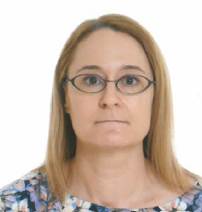Dr. Monica Blank
Communications and Power Industries
Lectures
High Power and High Frequency Gyrotrons
Gyrotron oscillators and amplifiers are being used in a variety of applications where high power levels are required at millimeter wave frequencies. Gyrotron oscillators, originally developed for magnetic fusion research applications, have achieved continuous-wave (cw) power levels in excess of 1 MW at frequencies up to 200 GHz. The success of gyrotron oscillators for fusion has opened a broader field of applications for gyro-devices, including industrial heating and sintering, non-lethal weapon systems, and spectroscopy. Gyrotron amplifiers have been developed for applications requiring phase coherence and instantaneous bandwidth, such as millimeter-wave radar and linear accelerator drivers. Potential new applications continue to spur gyrotron research and development around the world.
Relatively new in the world of vacuum electronic devices (VEDs), the gyrotron, based on the cyclotron maser interaction, is uniquely capable of producing high peak and average powers (megawatts) at high frequencies (hundreds of gigahertz and beyond.) The ways in which the fundamental physics of gyrotrons allow them to overcome the power limits at higher frequencies suffered by conventional VEDS, such as klystrons and traveling-wave-tubes, will be described. In addition, design features of key gyrotron components will be detailed. The capabilities and limitations, as well as the technical challenges of current-day gyro-devices will be discussed. New directions in gyrotron research and examples of various applications will be presented.
Silicon (Si) power semiconductors were the devices of choice for pulsed power and continuous power applications. The Si material is reaching its limit for high voltage, high current and high temperature operation. New wide bandgap materials such as Silicon Carbide (SiC) and Gallium Nitride (GaN) are being investigated for high pulsed power and continuous applications. SiC is more mature that GaN and some low power devices are being introduced to the market place. Research of SiC devices have demonstrated very high voltage and temperature operation.
This presentation will focus on power semiconductors for pulsed and continuous operations. An overview of semiconductor physics will be given with a focus on the basic parameters such as bandgap, avalanche, mobility, and lifetime. A review of the operation of power devices such as IGBTs, Thyristors, GTOs, and Power diodes such as P-I-N and JBS will be given. Thermal and electrical performance will be covered in addition to failure analysis and limitations of the devices. A discussion of SiC power devices, results, and updates on the state-of-the-art of the devices will be covered. Modules for high voltage and high current applications will be discussed, along with how to select the appropriate devices for the right applications. Silvaco simulation results will be provided to determine the high electric field across the devices under high blocking voltage. Simulation results will also be provided to show the high current density and high temperature areas within the devices.
Millimeter Wave Sources for Dynamic Nuclear Polarization Enhanced Nuclear Magnetic Resonance
The past several decades have seen a renewed and growing interest in solid-state dynamic nuclear polarization (DNP) enhanced nuclear magnetic resonance (NMR) spectroscopy for a variety of applications in structural biology and materials science. Although solid-state NMR is a widely used and powerful spectroscopic method, its inherently low sensitivity can limit its effectiveness for some applications. DNP has emerged as a promising technique for improving NMR’s low sensitivity and, thus, reducing the time required to obtain meaningful spectra. With DNP, the relatively large spin-polarization of electrons is transferred to the surrounding nuclear spins through the irradiation of the electron nuclear transitions at, or near, the electron paramagnetic resonance (EPR) frequency. This polarization transfer results in an increase in NMR signal by several orders of magnitude, which in turn, results in greatly improved data acquisition rates. Depending on the parameters of the DNP experiment and the sample preparation, powers ranging from 10’s of milliwatts to 100 W at frequencies above 200 GHz are needed for modern DNP NMR systems.
Advances in both solid-state and vacuum-electron based sources at frequencies greater than 200 GHz have been a key factor in the recent improvements in solid-state dynamic nuclear polarization DNP-NMR instrumentation. The current state-of-the-art in solid-state sources and vacuum-electron devices (VEDs), such as extended interaction oscillators (EIOs), extended interaction klystrons (EIKs), and gyrotrons for DNP applications will be described. The key features and design aspects of gyrotrons, which are presently the most promising DNP sources for high-field NMR systems, will be detailed. In addition, the current capabilities of high-performance DNP gyrotron sources will be illustrated. The status of ongoing research efforts in DNP gyrotrons and future directions will be discussed.
About

Monica Blank received the B.S. degree (Electrical Engineering) from the Catholic University of America, Washington, D.C. in 1988, and the M.S. and Ph.D. degrees (Electrical Engineering) in 1991 and 1994, respectively, from the Massachusetts Institute of Technology, Cambridge, MA. In 1994 she joined the Vacuum Electronics Branch of the Naval Research Laboratory, where she was responsible for the design and demonstration of high-power millimeter wave vacuum electronic devices for radar applications. In 1999 she joined the gyrotron team at Communications and Power Industries (formerly Varian) where she continues her work on high-power millimeter wave gyrotron amplifiers and oscillators. Dr. Blank has received several professional awards, including the 1998 Alan Berman Publication Award at Naval Research Laboratory, the Robert L. Woods Award for Excellence Vacuum Electronics Technology in 1999, and an R&D 100 Award in 2015. Dr. Blank has previously served several terms on IEEE Plasma Science and Applications Executive Committee, one term on the IEEE Nuclear and Plasma Sciences Society Administrative Committee and was a Senior Editor for the IEEE Transactions on Plasma Science from 2009 – 2015.